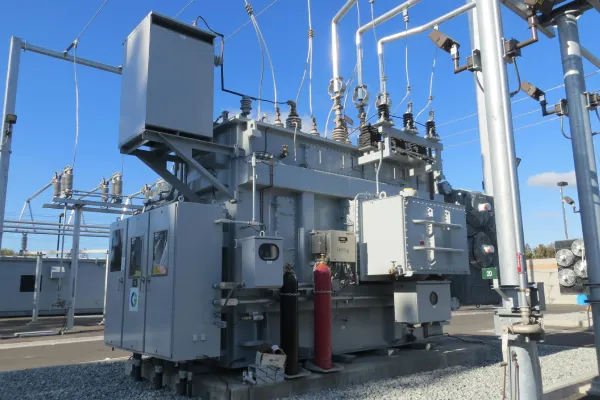Stainless steel in power engineering
The application of stainless steel in power engineering is equally promising, especially in power equipment that needs to resist corrosion, high temperature and environmental erosion.

The following are the main application areas of stainless steel in power engineering:
Power generation equipment:
Stainless steel is used in the manufacture of high-temperature components inside boilers, steam turbines, generators and steam turbines, as well as corrosion-resistant components in nuclear and thermal power plants.
Power transmission systems:
Stainless steel is used in the manufacture of towers, supports and fasteners for high-voltage transmission lines, especially in coastal and industrially polluted areas.
Transformers:
Stainless steel is used in transformer tanks and cooling systems to improve corrosion resistance and heat transfer efficiency.
Circuit breakers and switches:
Stainless steel is used in the manufacture of housings and internal components of circuit breakers and switches to improve their reliability and protection against environmental corrosion.
Cable Trays and Protection Tubes:
Stainless steel cable trays and protection tubes provide support and protection for cables and are suitable for the laying of indoor and outdoor power lines.
Electrical Boxes and Control Panels:
Electrical boxes and control panels made of stainless steel have a high level of protection and are suitable for use in harsh environments.
Wind power equipment:
In the wind power sector, stainless steel is used to manufacture key components of wind turbines such as bearings, gearboxes and blades.
Solar power systems:
Stainless steel is used in the manufacture of brackets and fixtures for solar photovoltaic panels, as well as collectors and pipes for solar thermal systems.
Hydroelectric power plants:
Stainless steel is used in hydroelectric power stations for the manufacture of turbines, gates and hydraulic systems, especially in environments where the water is aggressive.
Geothermal power generation:
Stainless steel is used for piping and heat exchangers in geothermal power stations due to its resistance to high temperatures and chemical corrosion.
Substations and distribution houses:
Stainless steel is used in the building structures of substations and distribution houses to increase their durability and reduce maintenance requirements.
Insulators and electrical insulation:
Stainless steel materials are used for certain specialized types of insulators and electrical insulation, especially in high humidity and polluted environments.
The use of stainless steel in power engineering will continue to expand as the global demand for renewable and clean energy continues to grow, and as the reliability and efficiency of power systems becomes more demanding. Stainless steel's corrosion and temperature resistance make it an ideal material choice for many critical components in power systems.

